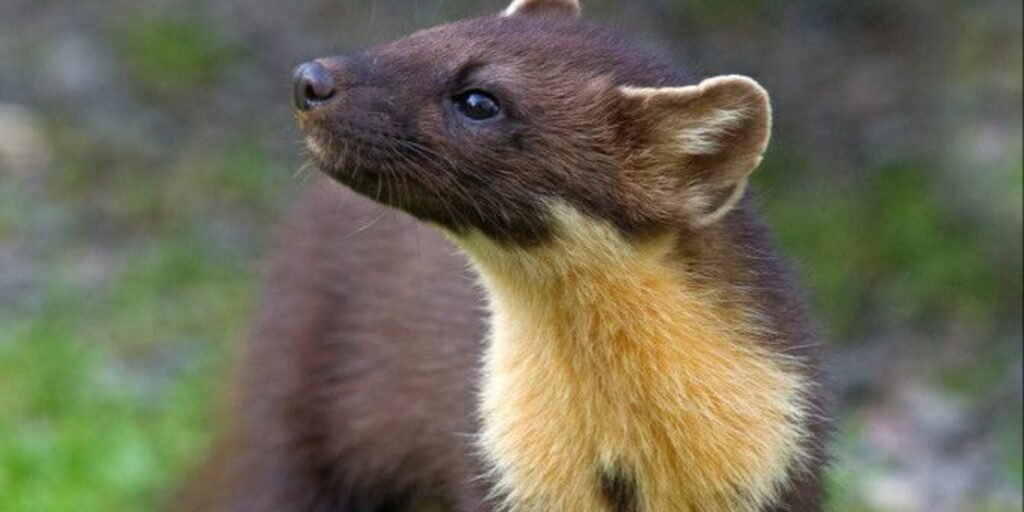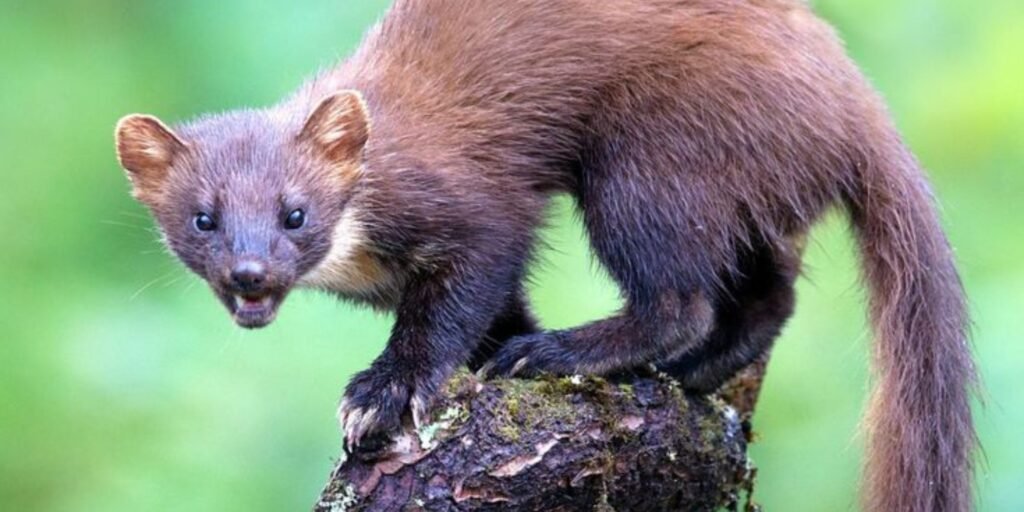Martens are members of the weasel family (Mustelidae), a group that includes other well-known animals such as otters, ferrets, badgers, and wolverines. They are small to medium-sized carnivores that exhibit interesting behavior and ecological roles in their habitats. But is a marten truly a carnivore? To answer this, we need to explore the diet, behavior, and classification of martens and consider their position within the food chain. This article will delve into whether martens can be considered purely carnivores or if their dietary habits suggest a more varied classification.
Understanding Martens: A Brief Overview

Martens are agile, tree-dwelling mammals found in forests across North America, Europe, and parts of Asia. There are several species of martens, with the American marten (Martes americana) and the European pine marten (Martes martes) being among the most recognized. These animals typically have slender bodies, short legs, and long, bushy tails, which make them highly skilled climbers and excellent hunters. Their sharp claws and keen senses, especially their sense of smell and sight, enable them to thrive in their forested habitats.
Martens prefer habitats with dense forests, as they offer ample food sources, shelter, and places to hide from predators. They are solitary animals, primarily active during dusk and dawn (crepuscular), and are known for their elusive behavior, making them difficult to observe in the wild. Despite their relatively small size—usually ranging from 15 to 25 inches (38 to 64 cm) in body length—martens are formidable predators in their ecosystems.
What Do Martens Eat?
While martens are often classified as carnivores, their diet is far from strictly meat-based. In fact, martens have an opportunistic and varied diet that reflects their adaptability to different environments. Although they primarily hunt small animals, their diet includes a mix of animal and plant-based foods, making them omnivorous.
Small Mammals
The primary food source for martens is small mammals, which they hunt and capture with their impressive agility. Squirrels, voles, mice, and shrews are among the most common prey items in the marten’s diet. Martens are excellent hunters and often hunt by stealth, stalking their prey before pouncing with incredible speed. Their sharp claws and teeth allow them to capture and kill small mammals efficiently.
These small mammals provide martens with the protein and fat they need to sustain their active lifestyles, especially during the colder months. During winter, martens are especially dependent on small rodents, as many larger animals hibernate or become less active.
Birds and Bird Eggs
In addition to small mammals, martens will also hunt birds and bird eggs. They are skilled climbers and often forage in the trees for nests, where they can find eggs and young birds. The European pine marten, in particular, is known to raid bird nests, especially during the spring and summer months when young birds are more vulnerable.
Martens may also catch adult birds, though this is less common than hunting small mammals. The ability to climb trees gives martens a distinct advantage in accessing bird nests and finding hidden food sources in the forest canopy.
Insects and Invertebrates
Although small mammals and birds make up the bulk of their diet, martens will also consume insects, such as beetles, ants, and grasshoppers. Invertebrates provide martens with a quick and easy food source, especially during the warmer months when they are more abundant. Insects are a valuable source of protein and energy and can supplement the marten’s diet when other prey is scarce.
Fruits and Berries

Martens are opportunistic feeders and will also consume fruits, berries, and other plant matter when available. During late summer and fall, martens may feed on berries, nuts, and seeds that are abundant in their forest habitats. These plant-based foods provide essential vitamins and carbohydrates, which help martens store energy for the colder months.
The American marten, in particular, has been observed eating berries, mushrooms, and even acorns, which are abundant in the forest during autumn. While the inclusion of plant matter in their diet may seem unusual for a carnivore, it is a necessary part of their nutritional intake.
Carrion
In addition to hunting fresh prey, martens will scavenge carrion when the opportunity arises. They are opportunistic feeders, meaning they will take advantage of any available food sources, including the carcasses of animals that other predators have killed. Carrion can provide martens with essential nutrients, especially during times when live prey is scarce.
Though martens are capable of scavenging, they are more likely to rely on their hunting skills to secure fresh food. However, in harsh conditions where food is limited, scavenging becomes a more important part of their diet.
Is a marten a carnivore? :Are Martens True Carnivores?
Given that martens consume a wide variety of foods, including small mammals, birds, insects, and fruits, it may be tempting to classify them as omnivores rather than strict carnivores. However, the classification of martens as carnivores is still valid, but with a slight modification: martens are carnivorous omnivores.
Carnivorous omnivores are animals that primarily eat meat but will also consume plant matter when available. This term accurately reflects the dietary habits of martens, as they rely on animal-based foods for the majority of their nutrition but will supplement their diet with fruits, berries, and other plant materials when they are accessible.
Martens’ carnivorous nature is evident in their hunting behavior and reliance on protein-rich foods like small mammals and birds. Their hunting skills, sharp claws, and powerful jaws are adapted to capture and kill prey, making them effective predators in their ecosystems. However, their opportunistic feeding habits, which include consuming plant-based foods and insects, show that they are flexible in their dietary preferences.
Is a marten a carnivore? :The Role of Martens in the Ecosystem
Martens play an important role in maintaining balance within their ecosystems. As carnivores, they help regulate the populations of small mammals, birds, and insects. By preying on these species, martens help prevent overpopulation, which can lead to resource depletion and imbalances in the food chain.
In addition to controlling populations of prey species, martens also contribute to seed dispersal. By eating fruits and berries, martens inadvertently transport seeds to new areas, helping plants to propagate and grow. This role highlights the marten’s ecological importance beyond its role as a predator.
Furthermore, martens are often preyed upon by larger carnivores, such as foxes, wolves, and birds of prey.
Is a marten a carnivore? :Marten Behavior and Hunting Strategy
Martens are highly adaptable hunters who rely on a combination of stealth, agility, and strategy to capture their prey. As skilled climbers and swimmers, martens are capable of pursuing prey both on the ground and in trees. Their sharp senses of sight, smell, and hearing allow them to detect prey from a distance, and they use their agility to close in on their target before making a swift attack.
Martens primarily hunt alone, relying on their abilities to capture food. They are solitary by nature, and their hunting territories are defended against other martens. Their keen territorial instincts ensure that they have access to enough resources to survive and thrive in their environments.
Although martens are capable of hunting small mammals, birds, and insects, they will often rely on scavenging when prey is scarce. In harsh winters, when hunting becomes more difficult, martens may turn to carrion or raid other predators’ kills for food. This flexibility in their diet allows martens to survive in a variety of habitats, from dense forests to mountainous regions.
Is a marten a carnivore? :Conservation and Threats to Martens
While martens are relatively adaptable animals, they face several threats to their survival, particularly from habitat loss and fragmentation. As forests are cleared for agriculture, logging, and urbanization, martens lose their natural habitats and become increasingly isolated. This fragmentation of their habitats can lead to reduced access to food and breeding opportunities, threatening the long-term survival of marten populations.
In addition to habitat loss, martens are also hunted for their fur, which is valuable in the fur trade. Overhunting and illegal trapping have contributed to declines in marten populations in some regions. Conservation efforts are underway to protect martens and their habitats, including the establishment of protected areas and sustainable hunting regulations.
Is a marten a carnivore? :Conclusion: Martens as Carnivorous Omnivores

In conclusion, martens are best classified as carnivorous omnivores—animals that primarily eat meat but also include plant matter, insects, and other opportunistic food sources in their diet. While their diet consists mostly of small mammals, birds, and carrion, they will also consume fruits, berries, and insects when available. This flexibility in their feeding habits allows martens to survive in a variety of environments, making them resilient and adaptable predators.

